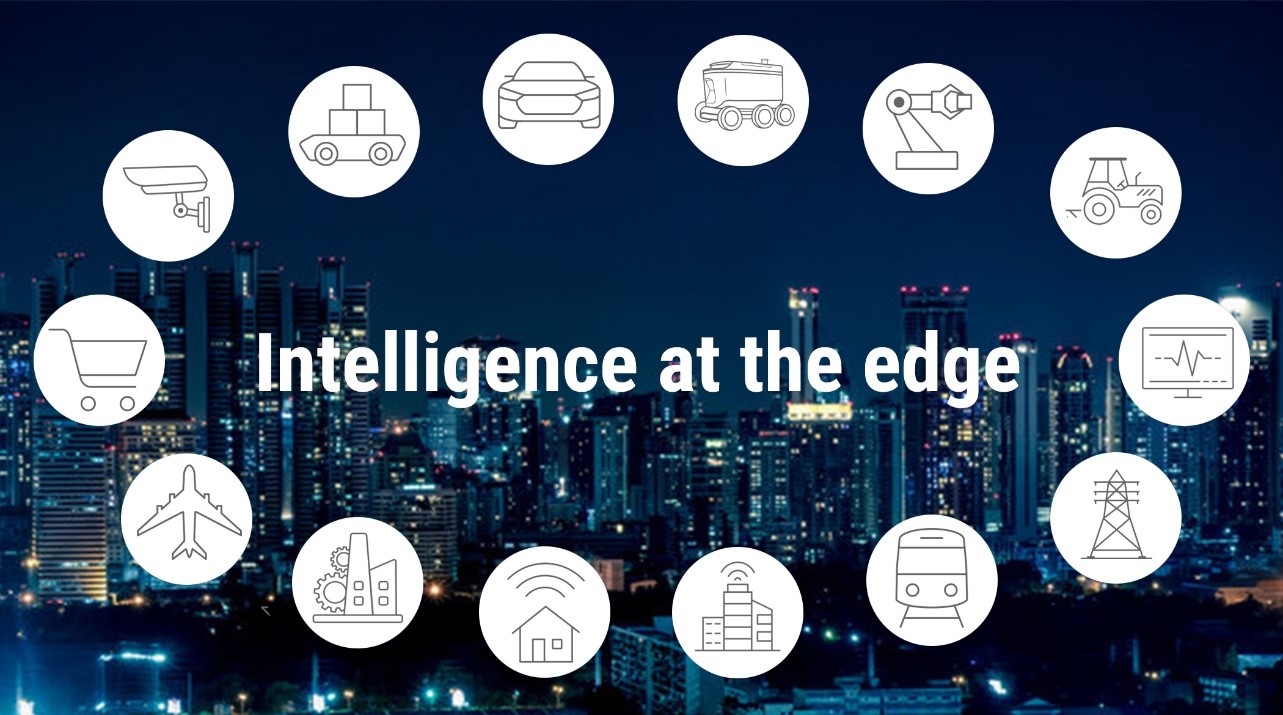SPRY344A January 2022 – March 2023 TDA4VM , TDA4VM-Q1
Defining AI at the edge
AI at the edge happens when AI algorithms are processed on local devices instead of in the cloud and is changing what is possible in industrial and automotive applications where deep neural networks (DNNs) are the main algorithm component. To operate efficiently in size-constrained, power and heat dissipation-constrained, and cost-constrained environments, edge AI applications require high-speed and low-power processing, along with advanced integrations unique to the application and its tasks. Figure 1 shows some of the applications where edge AI processing can be used to improve performance and efficiency. For example, edge AI systems that use vision input can implement a single camera for quality control on a production line, or multiple cameras to help support functional safety in a car or mobile robot.
 Figure 1 Intelligence at the edge exists in
many different applications
Figure 1 Intelligence at the edge exists in
many different applicationsEdge AI systems can help improve efficiency in warehouses and factories; make cities, construction and agriculture safer and more efficient; and make homes and retail settings smart. Let’s take a look at a few systems that require efficient edge AI processing:
- Advanced driver assistance systems (ADAS). ADAS technology provides information insight into the environment around a vehicle to make driving more convenient, less stressful and safer. Most ADAS features are vision-based systems, taking high-resolution inputs from multiple camera sensors and using deep learning and computer vision algorithms to interpret those ADAS technology provides information insight into the environment around a vehicle to make driving more convenient, less stressful and safer. Most ADAS features are vision-based systems, taking high-resolution inputs from multiple camera sensors and using deep learning and computer vision algorithms to interpret those images.
- Autonomous mobile robots and drones. For commercially viable robots, the system on chip (SoC) must process complex perception and navigation stacks at high speeds and low power, with optimized system costs. The SoC must also offload computationally intensive tasks such as image dewarping, stereo depth estimation, scaling, image pyramid generation and deep learning for maximum system efficiency.
- Smart shopping carts. Smart shopping carts can calculate order totals when items are placed in the cart, recommend shopping list items and allow consumers to pay for groceries on the cart, enabling customers to have a more customized shopping experience and skip checkout lines. Most smart shopping carts have multiple vision sensors that automatically detect items with cameras and computer vision smart shopping carts can calculate order totals when items are placed in the cart, recommend shopping list items and allow consumers to pay for groceries on the cart, enabling customers to have a more customized shopping experience and skip checkout lines.
- Edge AI boxes. Edge AI boxes are an intelligent extension of the camera systems used in retail automation, factory monitoring and building surveillance systems. Despite size constraints and power and heat dissipation challenges, high-throughput AI enables the box to perform intelligent processing for a greater number of cameras.
- Machine vision cameras. Machine vision cameras for optical character recognition, object identification, defect detection and robotic arm guidance leverage embedded AI technologies to further simplify product development and improve system accuracy.
Table 1 lists system requirements from various applications.
| ADAS | Robotics | Smart Retail | Machine Vision |
Edge AI Box | |
|---|---|---|---|---|---|
| Deep learning accelerator | x | x | x | x | x |
| Multicamera image signal processing (ISP) | x | x | x | x | x |
| Vision accelerators | x | x | x | x | x |
| Depth and motion accelerators | x | x | x | x | x |
| Ethernet switch | x | x | x | ||
| Peripheral Component Interconnect Express (PCIe) switch | x | x | |||
| Functional safety | x | x |